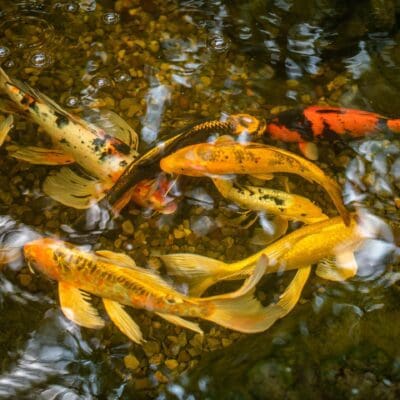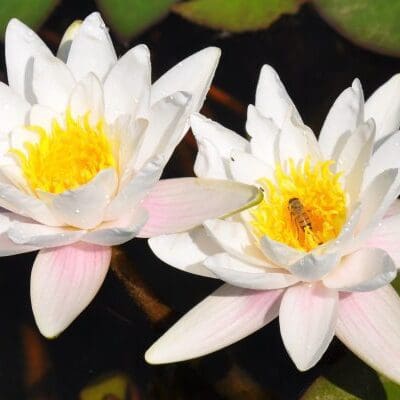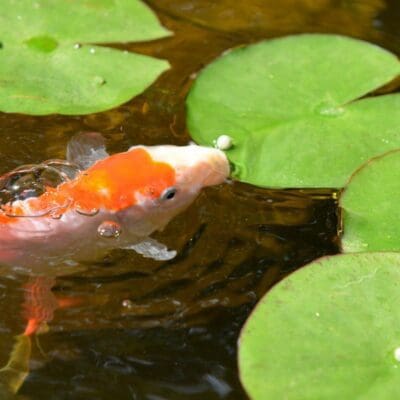What is an ornamental tree? Ornamental trees are incorporated in the landscape purely for aesthetic reasons, and combined with other garden plants are essential for an attractive appearance. That being said, just because they are pretty, doesn’t mean they don’t have other worthy attributes. Below we will find out more about each tree recommendation. There are several important things to consider when adding the best ornamental trees for Southeastern PA gardens to achieve desired results not only today, also to enjoy throughout the years to come.
How do you choose what is the best ornamental tree for Southeastern PA gardens? First, it is important to know a little about the plant’s characteristics which vary a lot, even within a particular species. A tree’s characteristics include not only size and form; also the flowers bloom time and color, scent, whether flowers turn to fruit or seed pods, display fall color, or have interesting bark and winter interest in the landscape. Sunlight preference, wind and soil conditions are also important factors for choosing the right plant for a particular site. These are the considerations that we as professionals contemplate with every plant selection we recommend.
Why are ornamental trees important? Gorgeous trees add garden drama and engaging focal points for an interesting landscape that others appreciate and often envy, so they must be placed strategically to have room to grow even more impressive with age. Today we often have smaller spaces that need curb appeal so plant breeders have developed new cultivars to meet these needs, without jeopardizing a plants character or resulting in diminished dramatic impact. Some of the results of these hybrids are new varieties of trees that are absolutely incredible!
Often tree lovers are drawn to the blooms and they decide that they want to add a particular species to their garden, and then try to find a good spot for it. The better approach is I have a nice spot for a tree and considering the situation, what are the best ornamental tree choices for my yard? These considerations are just as important when choosing trees to give as gifts. We at Turpin Landscaping call it matching selection to circumstance, and our knowledgeable staff is happy to help.
Our top choices for the Best Ornamental Trees for Southeastern Pa Gardens include and are not limited to:
DECIDUOUS ORNAMENTAL TREES – Top 10
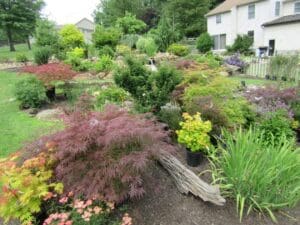 Acer palmatum – Japanese Maple Our favorite best ornamental trees for Southeastern PA gardens are Japanese Maple trees which add grace and beauty through the seasons. There are more than seven hundred varieties in which to choose from in upright and cascading forms in an array of leaf and bark colorations. While the Bloodgood Japanese maple is a tried-and-true specimen, consider some of our favorite varieties, including dwarf Japanese maples that feature a spectacle of vibrant leaf color. Generally speaking, Japanese Maples are small trees with upright forms reaching up to 30’ while others are trained as Bonsai or cascading forms maintained as very small trees with a huge impact in the landscape. This group of plants is so fascinating that another article has been solely dedicated to them to share further details because we are passionate about these exquisite trees and the attributes they provide. Most are hardy in Zone 5-8.
Acer palmatum – Japanese Maple Our favorite best ornamental trees for Southeastern PA gardens are Japanese Maple trees which add grace and beauty through the seasons. There are more than seven hundred varieties in which to choose from in upright and cascading forms in an array of leaf and bark colorations. While the Bloodgood Japanese maple is a tried-and-true specimen, consider some of our favorite varieties, including dwarf Japanese maples that feature a spectacle of vibrant leaf color. Generally speaking, Japanese Maples are small trees with upright forms reaching up to 30’ while others are trained as Bonsai or cascading forms maintained as very small trees with a huge impact in the landscape. This group of plants is so fascinating that another article has been solely dedicated to them to share further details because we are passionate about these exquisite trees and the attributes they provide. Most are hardy in Zone 5-8.
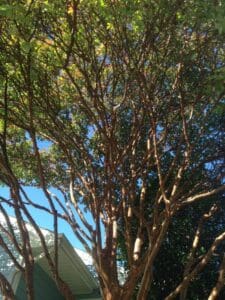 Acer griseum – Paperbark Maple A incredibly handsome tree with an oval to rounded crown and open habit and soft green leaves that turn scarlet in fall; it becomes distinctive and elegant with age, as its papery sheets of bark peel to reveal cinnamon-brown new bark. Excellent small landscape specimen or woodland under-story accent tree, this deciduous tree prefers partial shade to full sun, slowly grows to 25’ tall and 15-20’ wide in Zone 5-8.
Acer griseum – Paperbark Maple A incredibly handsome tree with an oval to rounded crown and open habit and soft green leaves that turn scarlet in fall; it becomes distinctive and elegant with age, as its papery sheets of bark peel to reveal cinnamon-brown new bark. Excellent small landscape specimen or woodland under-story accent tree, this deciduous tree prefers partial shade to full sun, slowly grows to 25’ tall and 15-20’ wide in Zone 5-8.
Such a beautiful bark belongs in close view for appreciation, is ideal for shading outdoor living spaces or as a front yard accent. Paperbark Maples add interest to water-garden or wildlife settings and integrate into wetland conditions in transitions between the cultivated garden and open space while providing winter interest. Paperbark Maples is one of the best ornamental trees for Southeastern PA gardens and makes an excellent bonsai subject.
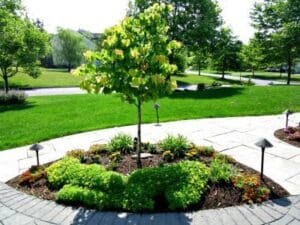 Cercis canadensis – Eastern Redbud This lovely harbinger of spring has been called “a breath of fresh air after a long winter” and “one of our most beautiful native trees” by tree expert Michael Dirr. What makes the Redbud so special is its gift of spring color and its hardy adaptability, which make it as welcome in a forest setting as in a home landscape, where it can serve admirably as a specimen tree or in groups. This little tree bears showy pink flowers in very early spring with blooms along the stems lasting for two to three weeks. The heart-shaped leaves also emerge with a reddish color, giving way to a lustrous summer green and finally to a striking fall yellow. Even in winter, this little tree is pleasant to behold, with its arching limbs and rounded crown. Its size varies greatly by species, as well as leaf color, and growth habit in both upright and weeping forms.
Cercis canadensis – Eastern Redbud This lovely harbinger of spring has been called “a breath of fresh air after a long winter” and “one of our most beautiful native trees” by tree expert Michael Dirr. What makes the Redbud so special is its gift of spring color and its hardy adaptability, which make it as welcome in a forest setting as in a home landscape, where it can serve admirably as a specimen tree or in groups. This little tree bears showy pink flowers in very early spring with blooms along the stems lasting for two to three weeks. The heart-shaped leaves also emerge with a reddish color, giving way to a lustrous summer green and finally to a striking fall yellow. Even in winter, this little tree is pleasant to behold, with its arching limbs and rounded crown. Its size varies greatly by species, as well as leaf color, and growth habit in both upright and weeping forms.
Early settlers found the blossoms of the redbud a delicious addition to their salads. Early folk healers used the bark to treat common maladies and sometimes even leukemia. And many Native Americans chose the wood of the California redbud for their bows. But the sheer springtime beauty of the redbud may be its greatest hold on the American spirit. Today, it is its versatility, dependability, deer resistance and various species that fit many environmental circumstances that make the Redbud our second most popular best ornamental trees for Southeastern PA gardens, and worthy of a more detailed article about the diverse species. A low maintenance group of trees, cold hardy in Zone 4-9, and usually grows no taller than 30 feet, every yard should have at least one Redbud Tree!
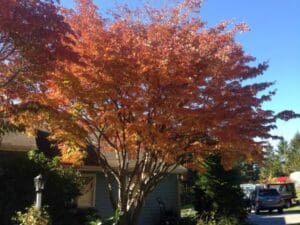 Cornus kousa – Japanese Dogwood Kousa Dogwood makes an excellent tree in the landscape and offers a long season of interest. The spring blooms are probably the tree’s largest selling point—and it’s most misunderstood. The white “petals” aren’t actually petals at all. They have modified leaves called bracts that surround the small, greenish-yellow, insignificant flowers. Beginning in early summer, beautiful white bracts [although sometimes with a pink tinge] in sets of four surround tiny green flowers. These are followed by reddish fruit that resembles raspberries and attracts birds. Autumn color is deep reddish purple. The showy bark is apparent all year and is especially appreciated during the winter. This species is resistant to dogwood anthracnose and has good cold hardiness. A moderate grower as a specimen plant or in a woodland setting, it can be a single trunk tree or large, multi-stemmed moderate growing shrub reaching 15-30’ high and 10-15’ wide, and also attracts butterflies. Cornus kousa shows best in full sun or part shade, and fertile, moist but well-drained, sandy soil in Zone 5-8.
Cornus kousa – Japanese Dogwood Kousa Dogwood makes an excellent tree in the landscape and offers a long season of interest. The spring blooms are probably the tree’s largest selling point—and it’s most misunderstood. The white “petals” aren’t actually petals at all. They have modified leaves called bracts that surround the small, greenish-yellow, insignificant flowers. Beginning in early summer, beautiful white bracts [although sometimes with a pink tinge] in sets of four surround tiny green flowers. These are followed by reddish fruit that resembles raspberries and attracts birds. Autumn color is deep reddish purple. The showy bark is apparent all year and is especially appreciated during the winter. This species is resistant to dogwood anthracnose and has good cold hardiness. A moderate grower as a specimen plant or in a woodland setting, it can be a single trunk tree or large, multi-stemmed moderate growing shrub reaching 15-30’ high and 10-15’ wide, and also attracts butterflies. Cornus kousa shows best in full sun or part shade, and fertile, moist but well-drained, sandy soil in Zone 5-8.
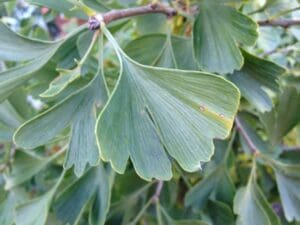 Ginkgo biloba – Maidenhair Tree Did you know that the Ginkgo is revered for its beauty and its longevity and that the ginkgo is a living fossil, unchanged for more than 200 million years? Hailed as “undoubtedly one of the most distinct and beautiful of all deciduous trees,” the ginkgo certainly stands out. Unique, fan-shaped leaves turn a stunning yellow color in the fall. It can tolerate many urban conditions including heat, air pollution, salt and confined spaces, and it establishes easily, grown in average, medium moisture soil in full sun.
Ginkgo biloba – Maidenhair Tree Did you know that the Ginkgo is revered for its beauty and its longevity and that the ginkgo is a living fossil, unchanged for more than 200 million years? Hailed as “undoubtedly one of the most distinct and beautiful of all deciduous trees,” the ginkgo certainly stands out. Unique, fan-shaped leaves turn a stunning yellow color in the fall. It can tolerate many urban conditions including heat, air pollution, salt and confined spaces, and it establishes easily, grown in average, medium moisture soil in full sun.
Although Ginkgo biloba is a deciduous conifer (a true gymnosperm) that matures to 100′ tall, there are smaller varieties, such as Jade Butterfly that is a favorite of ours to plant as a garden specimen. It is a dwarf, densely branched, vase-shaped tree with striking bright green leaves and lovely gold fall color. A slow-growing fruitless male Ginkgo with inconspicuous yellow-green catkins in mid-spring, Jade Butterfly eventually becomes a stunning shade tree reaching 12-15’ tall and 10’ wide with age. Zone 4-9.
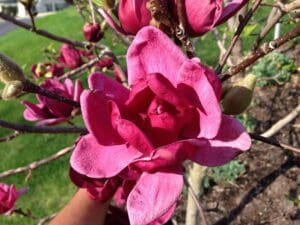 Magnolia varieties Magnificent flowering plants featuring blossoms in white, pink, red, purple, or yellow are amongst the best ornamental trees for southeastern PA gardens and are so diverse they require another article to further discuss. Not only are Magnolia trees diverse in leaf shape and plant form, and they include both evergreen and deciduous sorts. Magnolia is an ancient genus that consists of about 210 species and most have large striking fragrant blossoms and their traits vary widely by species. For any magnolia, pick planting site carefully. Virtually all types are difficult to move successfully once established, and many grow quite large. The best soil for magnolias is fairly rich, well-drained, and neutral to slightly acidic.
Magnolia varieties Magnificent flowering plants featuring blossoms in white, pink, red, purple, or yellow are amongst the best ornamental trees for southeastern PA gardens and are so diverse they require another article to further discuss. Not only are Magnolia trees diverse in leaf shape and plant form, and they include both evergreen and deciduous sorts. Magnolia is an ancient genus that consists of about 210 species and most have large striking fragrant blossoms and their traits vary widely by species. For any magnolia, pick planting site carefully. Virtually all types are difficult to move successfully once established, and many grow quite large. The best soil for magnolias is fairly rich, well-drained, and neutral to slightly acidic.
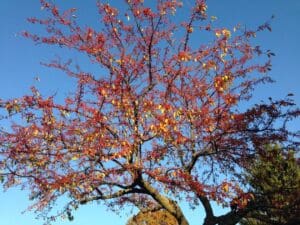 Malus – Crabapple Beautiful Crabapple trees are famous for their colorful, fragrant springtime blooms which may be single to semi-double, in shades from white to pink and red. Fruit then appears in hues of golden yellow to red and attracts hungry birds as fruit becomes more vibrant in color later in the growing season. Colorful foliage ranges from green to purple and bronze. It is no wonder crabapples are called “jewels of the landscape”.
Malus – Crabapple Beautiful Crabapple trees are famous for their colorful, fragrant springtime blooms which may be single to semi-double, in shades from white to pink and red. Fruit then appears in hues of golden yellow to red and attracts hungry birds as fruit becomes more vibrant in color later in the growing season. Colorful foliage ranges from green to purple and bronze. It is no wonder crabapples are called “jewels of the landscape”.
Flowering crabapples vary greatly in size and have diverse growth habits or tree shapes. The shapes consist of weeping (pendulous), rounded, spreading (horizontal), upright (columnar), vase-shaped, and pyramidal. At maturity, certain cultivars will only attain a height of eight feet, while others will tower to heights greater than 40 feet; however, most flowering crabapples reach mature heights of 15 to 25 feet. Due to their versatility, crabapples make excellent choices for use around homes, schools, parks, public and commercial buildings, and in highway plantings. To offer a word of caution, place carefully as fallen fruit in autumn may attract bees or become a nuisance in pedestrian traffic areas. Most are hardy to Zone 4 and prefer to grow in full sun
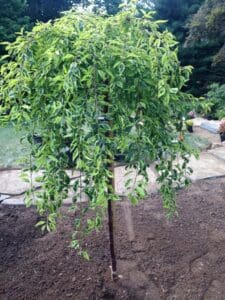 Prunus incisa – Fuji Cherry A dainty slow-growing, early white-flowering cherry, with cultivars developed for smaller garden spaces, some only reach 5-7’ tall and wide at maturity. The name Prunus is about the blossoms and to most people the name suggests large flowering trees with hungry roots. This Cherry gets its scientific name from the deep incisions on the leaves and is sometimes referred to as a neglected group of smaller cherry trees. Some are weeping forms while others are upright with somewhat contorted branches, and all make magnificent ornamental trees for southeastern PA gardens. They prefer full sun, well-drained fertile soil and make nice container plants or garden highlight in Zone 5-8.
Prunus incisa – Fuji Cherry A dainty slow-growing, early white-flowering cherry, with cultivars developed for smaller garden spaces, some only reach 5-7’ tall and wide at maturity. The name Prunus is about the blossoms and to most people the name suggests large flowering trees with hungry roots. This Cherry gets its scientific name from the deep incisions on the leaves and is sometimes referred to as a neglected group of smaller cherry trees. Some are weeping forms while others are upright with somewhat contorted branches, and all make magnificent ornamental trees for southeastern PA gardens. They prefer full sun, well-drained fertile soil and make nice container plants or garden highlight in Zone 5-8.
Stewartia pseudocamellia – Japanese Stewartia A lovely all season performing tree with showy Camellia-like blooms in summer that have white petals with orange centers. Deciduous green leaves turn bronzy-purple in the fall. Stewartia will tolerate full to partial sun and prefers constantly wet to moist soil. Slowly grows 15-30’ tall x 20-25’ wide in a pyramidal shape and useful as a specimen, in a border or woodland garden. Zone 5-8.
Styrax japonicus – Japanese Snowbell A splendid slow-growing small tree that is perfect near a patio or pathway, that will reach 20-30’ tall and wide in a rounded form. Fragrant white flowers hang from strongly horizontal side branches in spring to early summer. They are so pretty to admire from below that you might consider placing a bench beneath from another perspective. Snowbell trees prefer constantly moist but not soggy soil in partial to full sun. They are useful in container gardens, as a specimen to provide a focal point, and at home in either urban or woodland garden settings. Attractive dark green leaves turn red or yellow in fall. Zone 5-8.
EVERGREEN ORNAMENTAL TREES
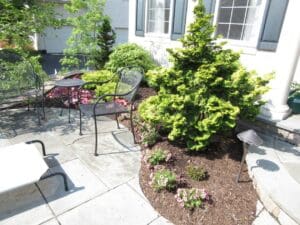 Chamaecyparis – Hinoki Cypress Scores of choice Chamaecyparis cultivars offer a wide range of color, texture, and shape for nearly every landscape need. C. obtusa, commonly known as False or Hinoki Cypress, thrives in moist, well-drained soil in full sun or partial shade and contributes sprays or fans of fine evergreen foliage to the landscape. C. pisifera, also known as Sawara Cypress, claims the best cold hardiness of the genus. Its cultivars thrive in full sun and contribute beautiful, feathery foliage to garden settings. C. nootkatensis, known as Alaskan Cedar, Yellow Cedar or Alaska Cypress is a medium to large size pyramidal tree which is one of the most beautiful of the conifers for making a stately accent in the landscape. This native selection thrives in cool, humid summer climates with above average rainfall, and is drought tolerant when established. C. thyoides, also called White Cedar, does best in full sun where its foliage contributes outstanding color. Chamaecyparis grow native in North America, Japan and Taiwan.
Chamaecyparis – Hinoki Cypress Scores of choice Chamaecyparis cultivars offer a wide range of color, texture, and shape for nearly every landscape need. C. obtusa, commonly known as False or Hinoki Cypress, thrives in moist, well-drained soil in full sun or partial shade and contributes sprays or fans of fine evergreen foliage to the landscape. C. pisifera, also known as Sawara Cypress, claims the best cold hardiness of the genus. Its cultivars thrive in full sun and contribute beautiful, feathery foliage to garden settings. C. nootkatensis, known as Alaskan Cedar, Yellow Cedar or Alaska Cypress is a medium to large size pyramidal tree which is one of the most beautiful of the conifers for making a stately accent in the landscape. This native selection thrives in cool, humid summer climates with above average rainfall, and is drought tolerant when established. C. thyoides, also called White Cedar, does best in full sun where its foliage contributes outstanding color. Chamaecyparis grow native in North America, Japan and Taiwan.
Cryptomeria japonica – Japanese Cedar Outstanding mid- to deep green foliage and conical or columnar form that vary by cultivar. Larger cultivars can be used as specimens or for screening. Dwarf cultivars are effective accents in rock gardens or conifer collections. They prefer full sun to part shade in Zone 5-9.
Sciadyopitys verticillata – Japanese Umbrella Pine This exquisite evergreen belongs to a genus of only one species that claims the history dating to the days of dinosaurs. Trees display whorls of needles that resemble the spokes of an umbrella and account for the tree’s common name. In recent decades, plantsmen have selected unique forms with striking foliage and superior habits to offer this incredible slow-growing, ornamental forms to us. Plant them in rich, acidic soil in full sun or partial shade, where you can appreciate the distinctive character they provide in landscapes and gardens. Zone 5-8.
Do Ornamental Trees require maintenance? Some more than others depending upon the type, but absolutely trees should be cared for to achieve their intended purpose, which is primarily to enhance our outdoor living spaces. To keep trees looking their best, provide ample water until the tree is established and during dry spells. Prune to maintain form and avoid reversion, fertilize once per year and look out for signs of pests. It may sound like a lot but it really isn’t much to ask in return for the enjoyment of beauty that endures all seasons.
